August 24, 2022 marks six months since the Russian President Vladimir Putin made a statement declaring the commencement of ‘special military operations’ in Ukraine. This essentially marked the beginning of Russia’s invasion of Ukraine.
The war has caused countless deaths, destruction of homes, mass displacement and possible war crimes. Documenting, investigating and advocating for the end of the conflict in Ukraine has become the focus of the international community.
Using best practices established through the Centre for Information Resilience’s (CIR) projects and the wider open source community, CIR launched the Eyes on Russia project in January, to collect, document and verify information coming out of Ukraine.
Our ambition was to make verified and reliable information public, in order to support media, humanitarian, research, justice and accountability organisations. We did exactly that.
This review provides an update on our work so far.
The Archive
The Ukraine Witness archive currently sits at more than 11,000 data entries. These are videos and photos which are categorised, verified, and analysed.
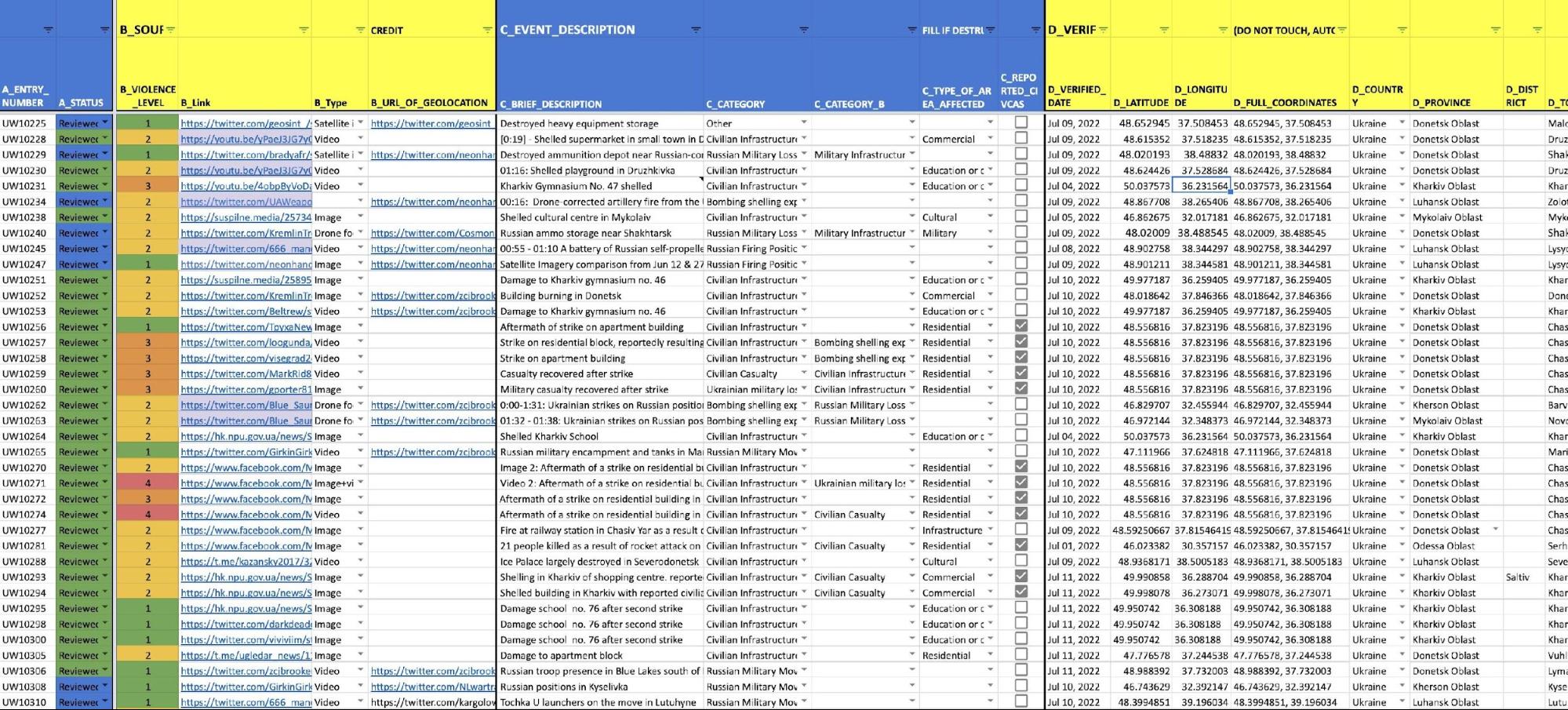
Figure 1: A screenshot of the Ukraine Witness database
This archive is shared with justice, accountability, humanitarian, and research groups to support them where it matters.

Our methodology for verifying this content involves rigorous checks, and automated record-keeping each step of the way. This guaranteed standard of verification means that evidence can be trusted and relied upon not only by the media, refugee agencies, humanitarian groups, those on the ground or diaspora communities, but also by justice and accountability mechanisms. These groups can access information on what is happening, where and when.
To build the database, we’ve been working closely with the open source community. The combined product of the database and map really shows the strength in collaboration. It is the result of a partnership with Bellingcat, GeoConfirmed, Advance Democracy, Inc and many freelance or volunteer analysts who supported our work along the way.
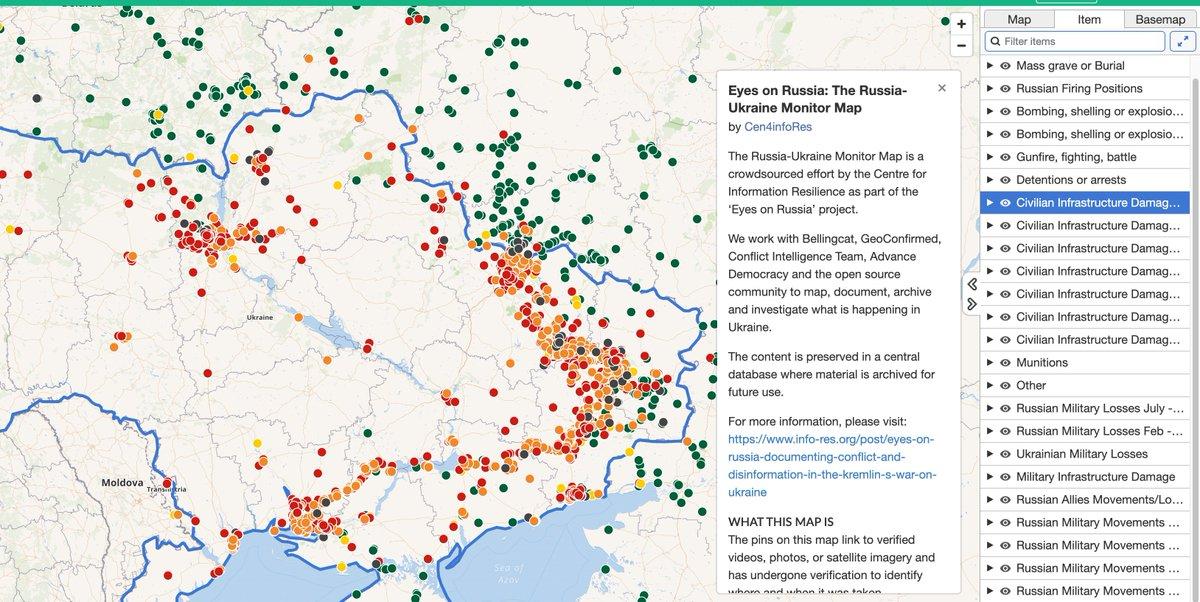
Figure: Screenshot of the Eyes on Russia Map.
Mapping Russia’s Movements
The Eyes on Russia database and map were initially created to monitor Russian troop build-ups along Ukraine’s borders. The type of content we were verifying in January and early February primarily consisted of lots of military hardware being transported to the border. For example, these were the type of quick-reaction reports our team was producing.
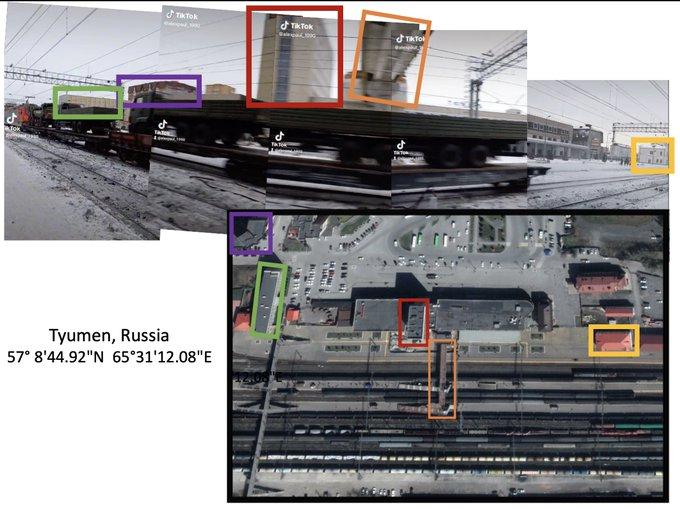
Figure: An example of breaking reports our analysts were producing for Twitter.
Our team also started to document the creation and expansion of new bases and potential staging areas in multiple locations along the borders of Ukraine, like this one in Belarus.

Figure: Russian military equipment building up in an airbase in Belarus, near Ukraine’s border.
Documenting Destruction
After the February 24 announcement, it seemed like the Russian military positions had already been set and put in motion. It was immediately after that date that we started documenting bombings of residential areas, shopping centres and more.
Many of these events were caught on camera, with clear evidence of the indiscriminate shelling and bombing of civilian areas, like this event in Kharkiv from late February.
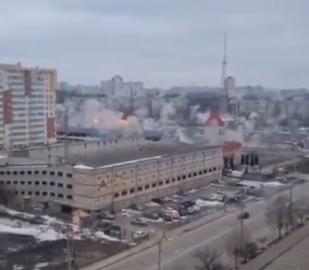
Figure: Multiple munitions exploding next to a shopping centre in Kharkiv in February.
Civilian infrastructure, including schools, hospitals, and places of worship were not spared by Russia’s bombardments on Ukrainian cities. Every morning, more and more scenes like this school in Kharkiv appeared after waves of overnight bombings.

Figure: A school where a bombed caused severe damage in Kharkiv.
To clearly show the scale of the damage to civilian infrastructure, our map was updated to be filterable by specific categories.
For example, here is all of the verified footage documenting civilian infrastructure damage in Ukraine seen on our map.
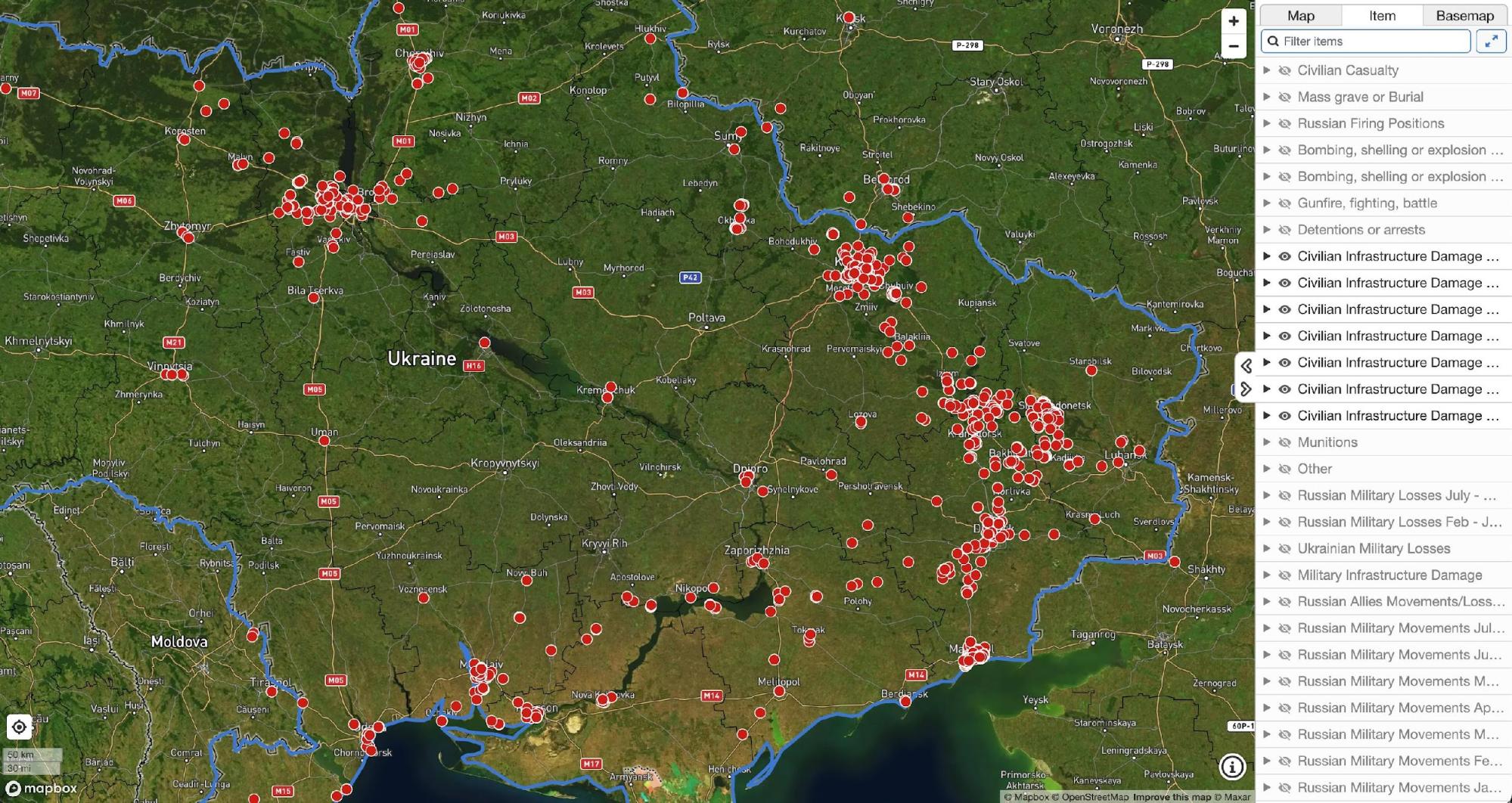
Figure: Eyes on Russia map showing civilian infrastructure damage.
Breaking down the data to the city-level reveals that Mariupol was one of the worst affected places for civilian infrastructure damage, largely due to Russia’s siege on the city. Mariupol is an interesting area, given the large presence of Russian forces. Occupation by Russian forces creates a dangerous environment for people who wish to upload footage, so there is a much stronger reliance on satellite imagery in Mariupol.
We’ve been using Maxar, Planet and Sentinel Hub satellite imagery to monitor the large amount of destruction in Mariupol.
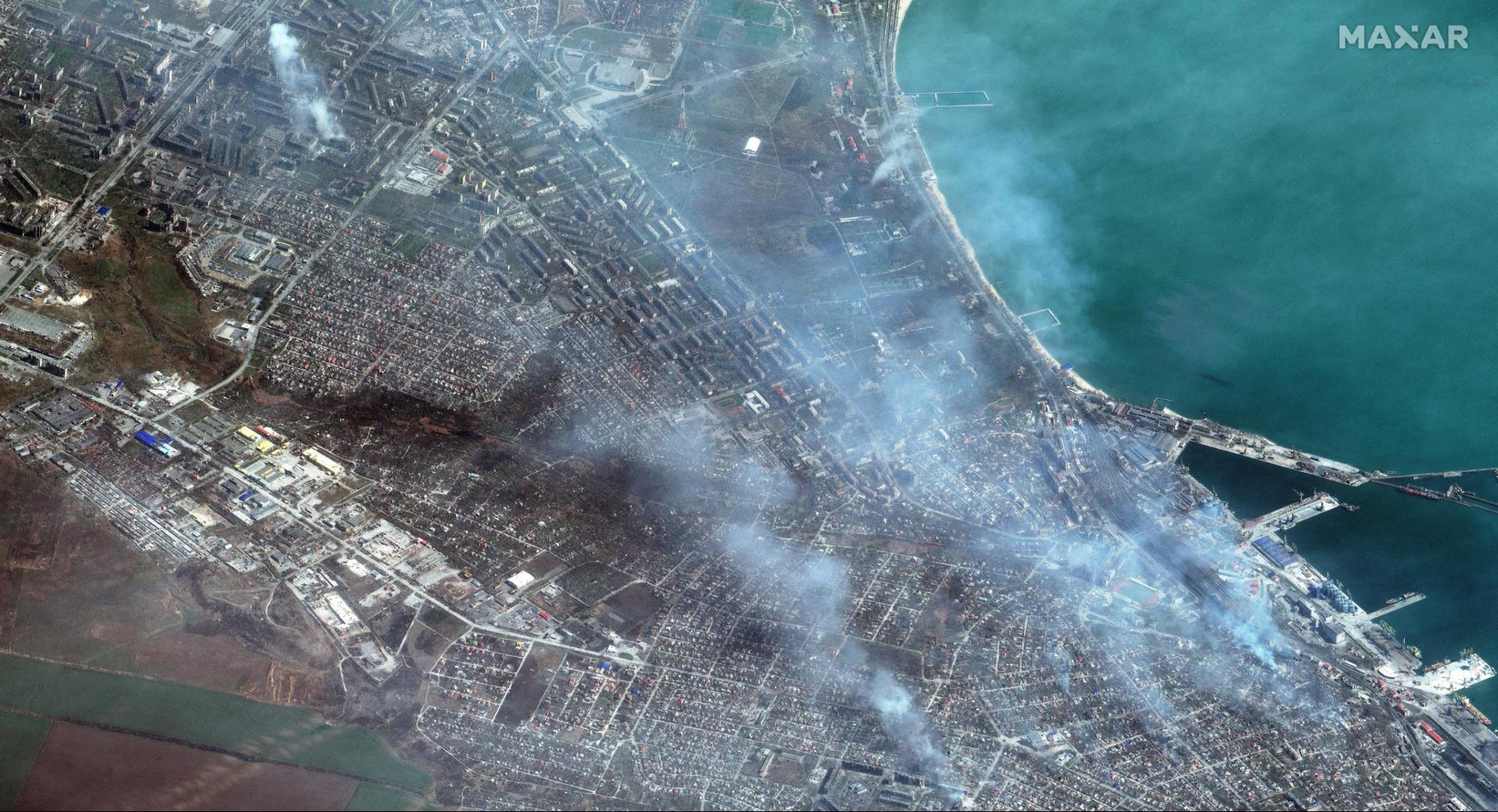
Figure: A Maxar satellite image showing large destruction to areas in Mariupol.
The widespread targeting of infrastructure warranted a deeper dive. We found a clear, systematic pattern which showed the targeting of educational facilities in Mariupol.
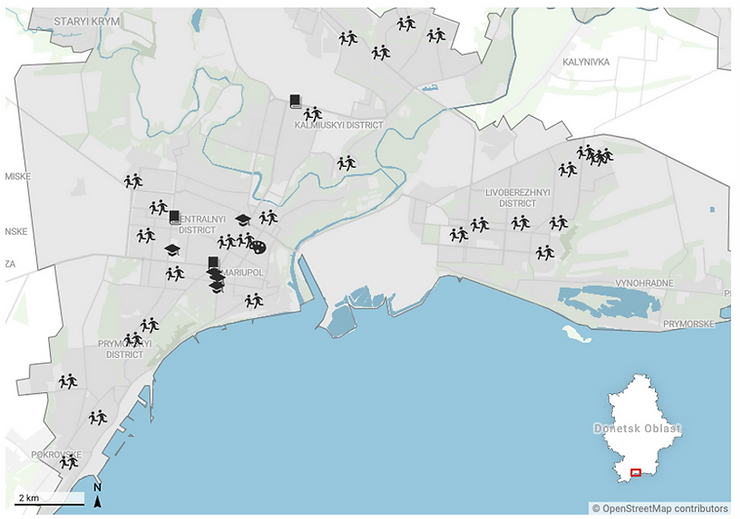
Figure: Map showing the locations of educational facilities that were all bombed in Mariupol.[1] [2] [3]
During the documentation of targeted locations, our analysts also discovered the targeting of zoos and wildlife parks across Ukraine.
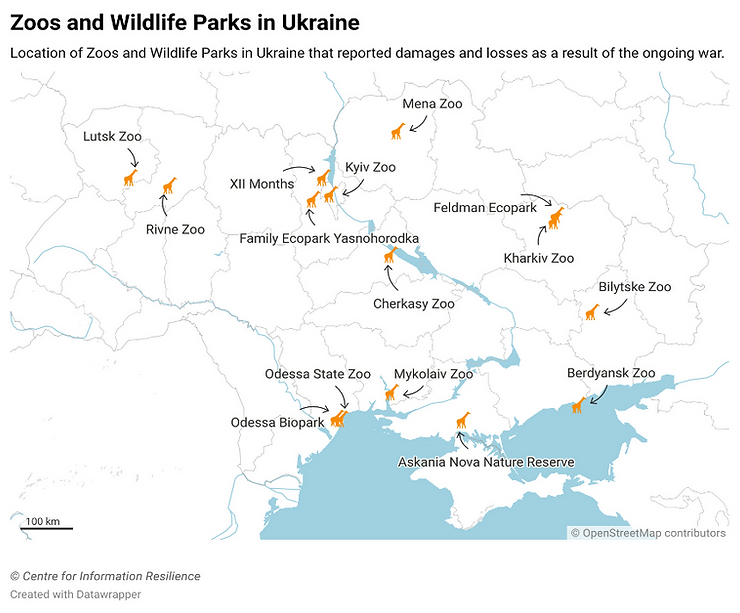
Figure: Map showing the locations of all of the targeted or damaged zoos and wildlife parks in Ukraine.
The destruction of civilian infrastructure isn’t the only thing we’ve seen from space over the past six months.
Our analysts have also been monitoring the expansion and development of graves, specifically in occupied areas, such as Kherson.
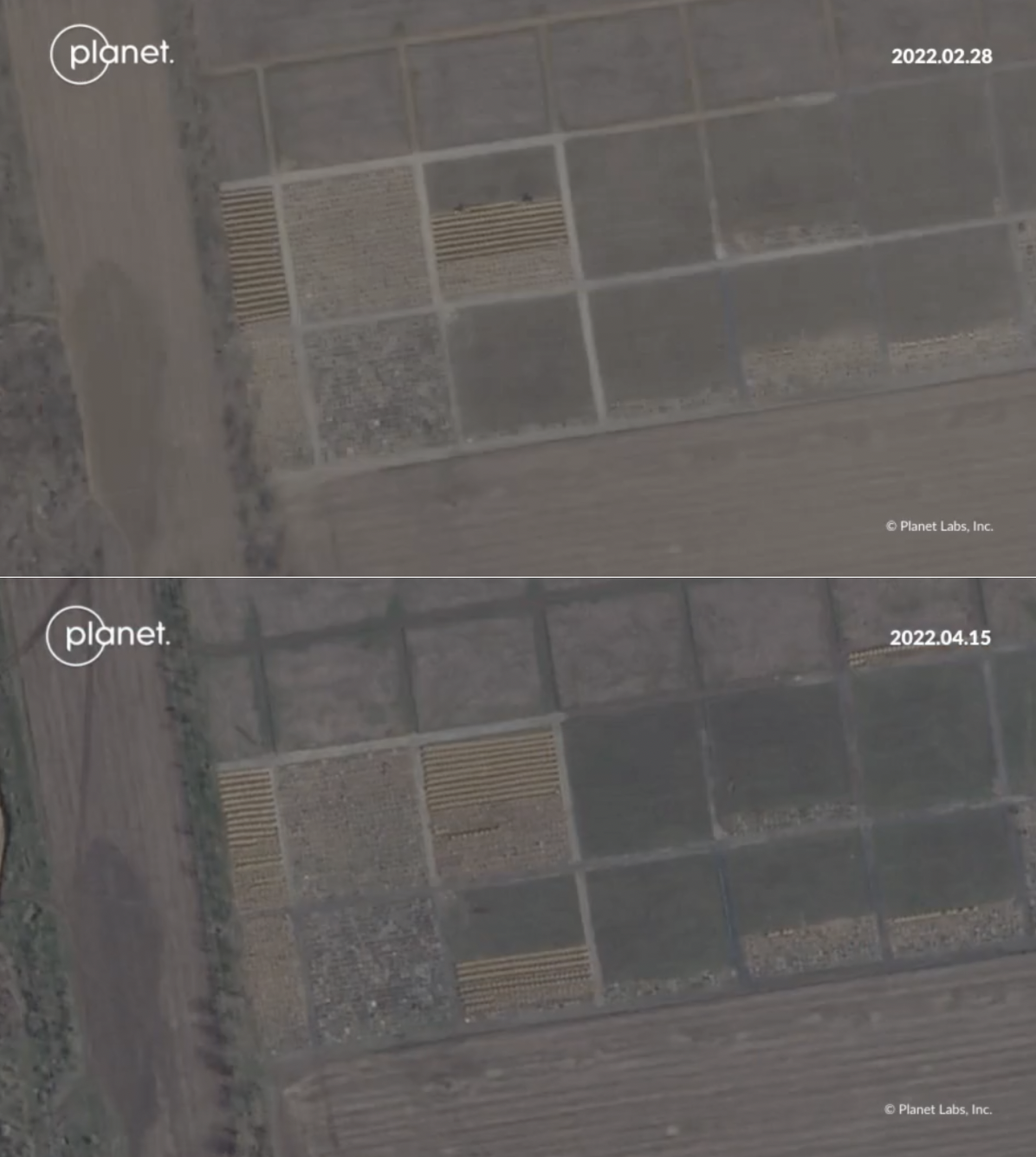
Figures: Planet satellite imagery showing expansion of grave rows in Kherson.
This monitoring resulted in the identification of several gravesites in Ukraine, some of which had been expanded with thousands of new plots in occupied areas.
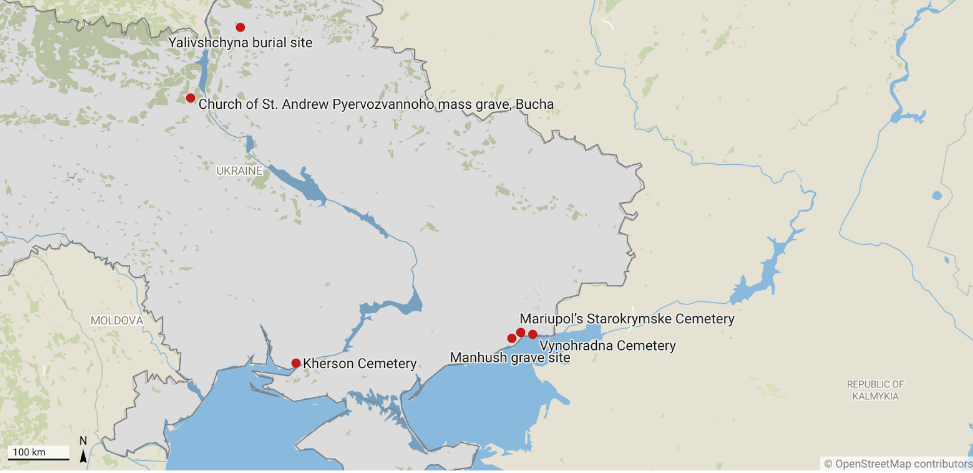
Figure: Location of several gravesites expanding in Ukraine.
Disinformation and Denialism
Many of the events our Eyes on Russia team has documented or verified have faced denial and propaganda in an attempt to distort truths and support pro-Russian narratives.
Our team has witnessed first hand a number of ways this has been carried out: for example, in our work on fake fact checking sites that attempted to debunk truths about Bucha. The Russian Government’s official diplomatic accounts shared these posts in relation to Bucha which claimed to ‘debunk’ satellite imagery and footage taken on the ground, however our investigation found that those ‘debunks’ and fact checks were wrong.
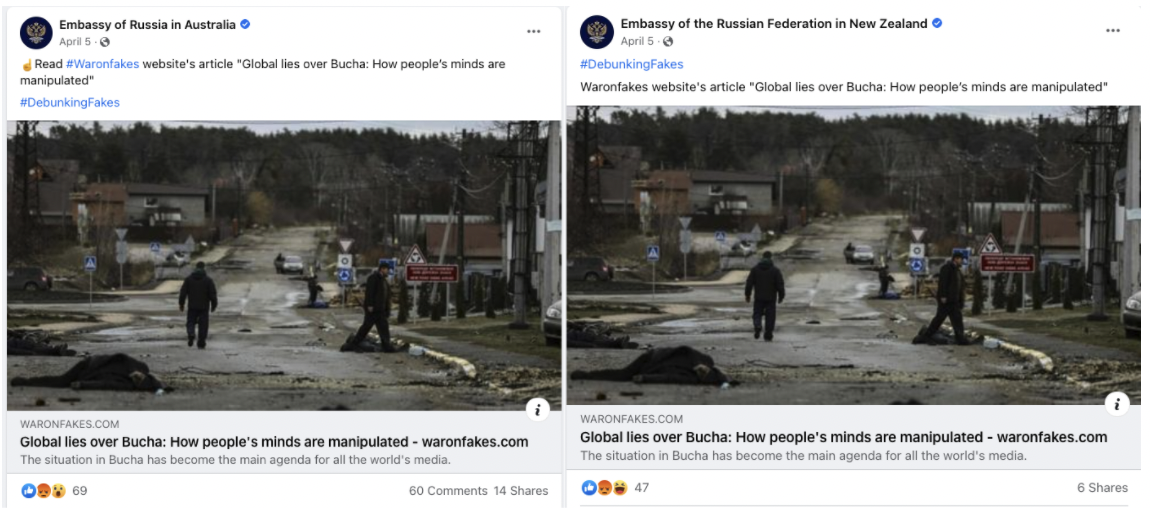
Figures: Russian Government social media accounts sharing posts from a fake fact checking site attempting to debunk and discredit claims of human rights abuses.
Our analysts also documented how the Russian Government uses children as tools of propaganda to justify their actions in Ukraine. Our work shows how the Kremlin is using ‘diseducation’ tactics to influence the next generations in Russian-occupied areas.
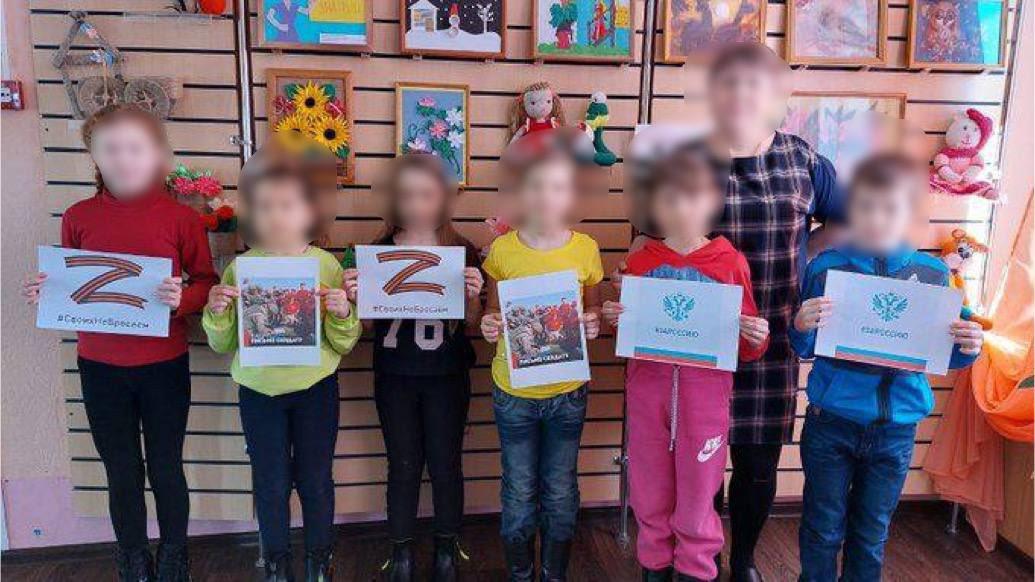
As the conflict continues, so do Kremlin influence campaigns – especially in Ukraine’s occupied areas. Future, crucial work will require us to watch, document and expose Russia’s attempts to control these areas and host ‘referendums’.
Something we’ve also noticed and may well see more of in the future is the rise of pro-Russian groups participating in propaganda and even on-ground events, such as this group that used open source techniques to provide the coordinates of a bombing in Kyiv.
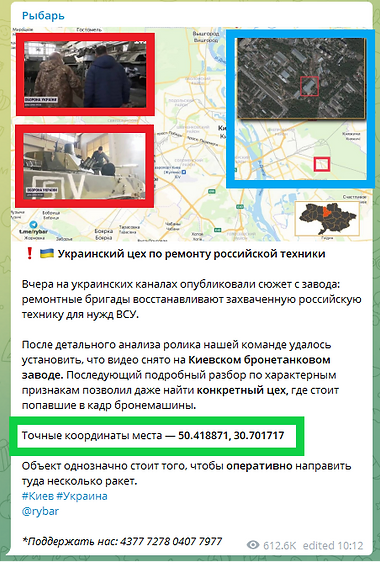
Figure: A post on Telegram from Rybar (channel) on the coordinates of a Ukrainian repair factory in Kyiv that was bombed by Russian forces.
Media collaborations
Through rigourous analysis, detemination, and relentlessly pursuing facts in the murky sea of state-backed narratives, we’ve been able to work with and support media organisations – such as our proud collaboration with CNN on the bombings in Kharkiv.
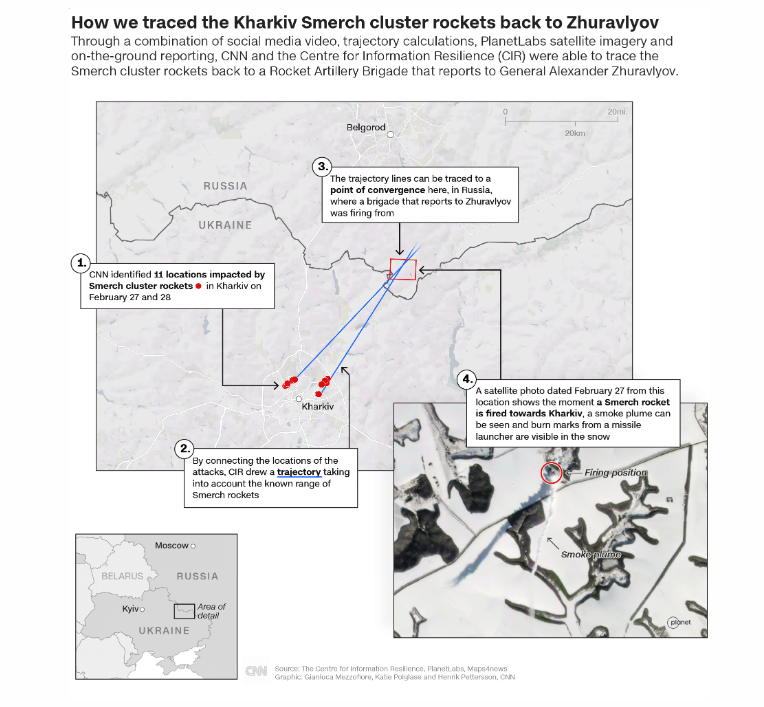
Figure: An excerpt of the findings detailing where rockets were fired from within Russia, into Ukraine’s Kharkiv.
This detailed report not only identified exactly where cluster munitions were used in Kharkiv and from where they were fired from within Russia’s borders – we also identified the unit and commander responsible for those bombings – Colonel General Alexander Zhuravlyov. This is the same individual who led the bombing campaign of Aleppo in 2016, also using cluster munitions. Identifying chains of command is essential for justice and accountability mechanisms in the future.
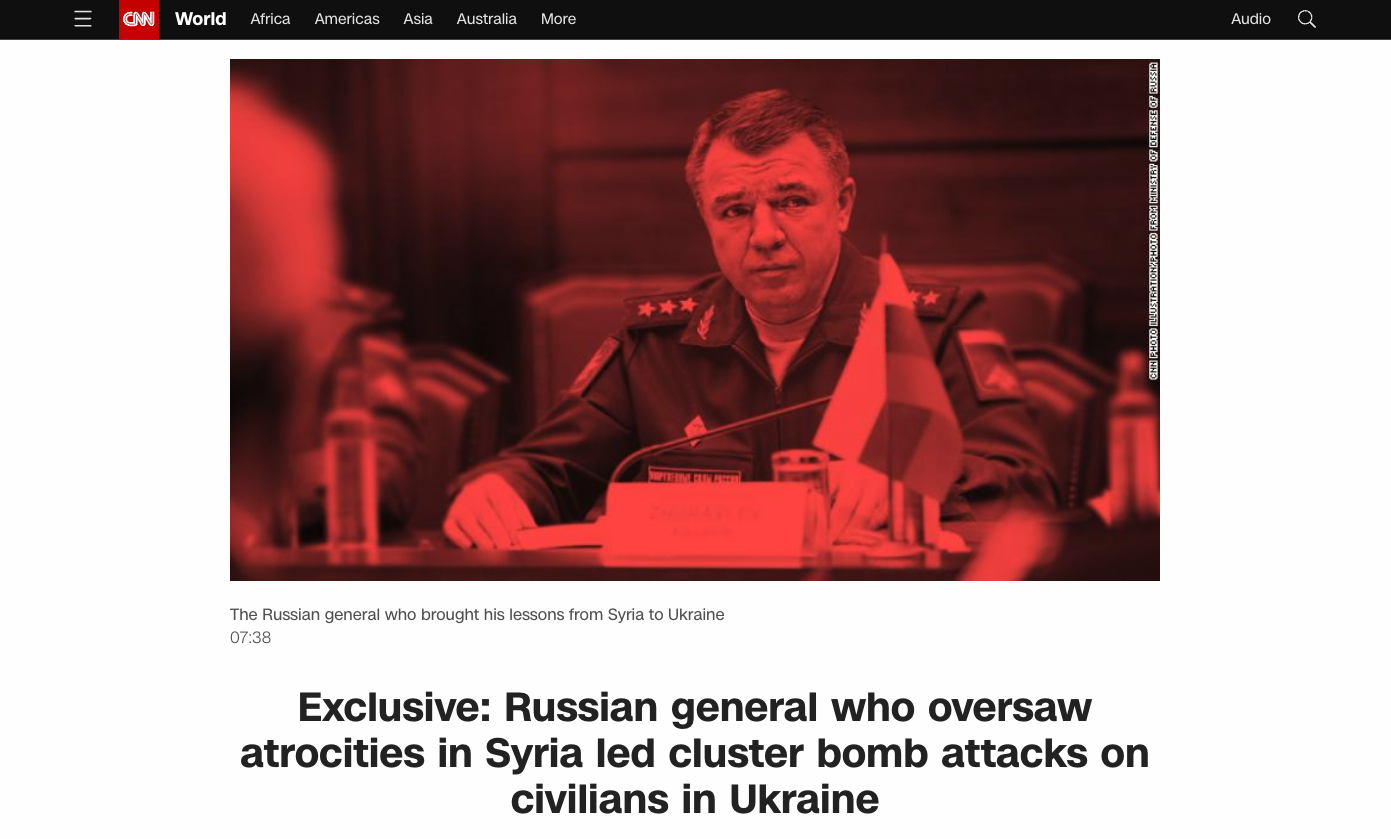
Figure: Collaboration between Centre for Information Resilience and CNN.
We’ve also worked with The Guardian on its coverage of mass graves in Ukraine.
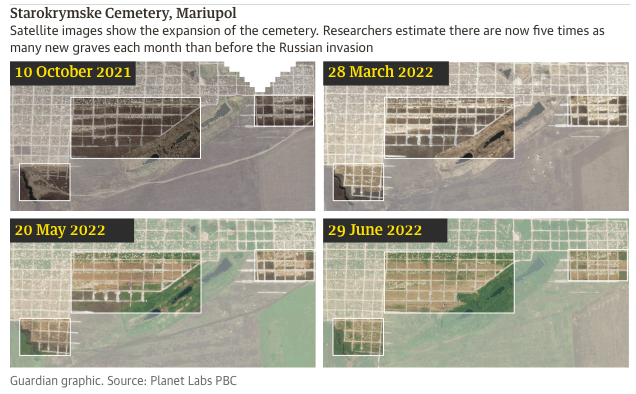
Figure: A graphic from the Guardian from a collaboration with the Centre for Information Resilience.
Our team assisted New Statesman in its reporting on how the Kremlin is weaponising children for its propaganda.

Figure: New Statesman article on the weaponisation of children.
We’ve also shared part of our archive with AP and PBS FrontLine to assist them in their War Crime Watch: Ukraine project, which has carried out in-depth coverage on the horrors seen in Ukraine.

Figure: AP and PBS War Crime Watch
Our work on debunking the Kremlin’s propaganda and documenting information related to potential war crimes was covered in this VICE documentary.

Figure: Screenshot showing Eyes on Russia Map on VICE.
The future for Eyes on Russia
Going forward, our investigations and collaborations continue to reveal grim details of Russia’s invasion of Ukraine. While conflict and the spread of propaganda continue unabated, we will remain vigilant and provide verified and reliable information for those seeking peace and justice.
Six months ago, we were determined to create a resource for policy makers, journalists, accountability bodes and the public could trust – in a conflict that would be marked by disinformation. So far so good – but with more hard work to come.
To stay up to date with our findings, visit the Eyes on Russia section on CIR’s website.
If you are looking to navigate, understand and stay up to date with the large volumes of footage that continue to come out of Ukraine, you can use our map (which will soon be redeveloped) to view verified and geolocated information from our Eyes on Russia Map.

